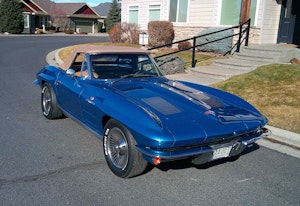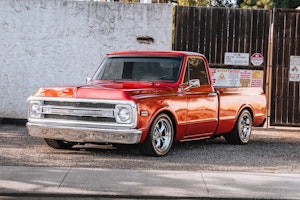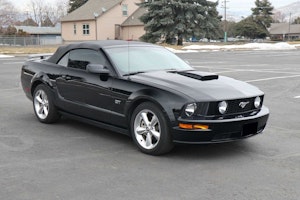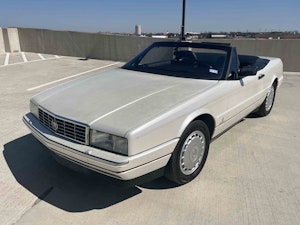Media | Articles
“Twin” Buick Grand Nationals: Barn find of the year or a sucker born every minute?
By now you might have heard of William Avila and Shawn Matthews, Oklahomans who bought a pair of ‘87 Buick Grand Nationals from some guy’s dusty garage a couple weeks ago. Because William’s detailed account of the deal first appeared on Facebook, you’d be forgiven for thinking it was really just some Russian ploy designed to undermine Buick turbo history. But then GM EFI Magazine, BarnFinds.com, Road & Track, The Drive, and others picked it up. And because automotive media defines a moral, civilized society, we now know it’s true.
The gist is this: Purchased new 30 years ago, the cars carry sequential VINs. For this reason, Avila dubbed them “The Twins.” Both were dusty as all get out, they’ve got saggy headliners, and probably every bit of their rubber is crunchy, but they are otherwise clean, new cars. They still wear original window stickers and have fewer than 1,400 miles combined. One of them, it is said, still has that new car smell. Ahhh.
What we don’t know, however, is what Matthews paid for them. The seller—the man who bought them new—was asking $200,000 for the pair, but Matthews balked. That figure isn’t exactly the going rate for a pair of Grand Nationals these days. Generally, they range from about $17,000 for a driver with needs to $52,000 for the best in the world, according to the Hagerty Price Guide. In fact, the record price for a Grand National at auction came at Mecum’s Harrisburg sale last year, when a 2,900-mile car sold for $50,600. The Twins, with 592 and 807 miles, respectively, could touch that kind of money once freshened up.
It bears mention that this is merely an exercise, as Matthews, who laid down the coin to secure them, ostensibly at a figure less than $200,000, has no plans to sell either car. Instead, as Avila maintains, “They will be shown locally, and always together and referred to as the TWINS.”
The value question is an interesting one, however. It’s easy enough to determine the market price, give or take, for a 1987 Buick Grand National. But just like any car with celebrity ownership history, a Pebble Beach victory, or some other X factor that sellers might affix in an attempt to boost the price, the “twin” thing—on top of the low-mileage, barn-find factor—gives these turbo Buicks a bump. But how much?
Marketplace
Buy and sell classics with confidence
Not $200,000 much, according to Greg Ingold, Valuation Data Support Specialist at Hagerty, who follows the Grand National and GNX market. “We’re talking two low-mile GNXs for that price,” he says. The GNX was the final, most fantastic iteration of the turbocharged Buick Regal, a 1987-only model with 276 horsepower and just 547 built. They were Corvette killers and quite rightly regarded as one of the fastest American cars of the ’80s, a decade not known for fast American cars.
“Being generous, I’d say the Twins are worth $60,000–$65,000 each when sold together,” Ingold says. “If they’re broken up and sold separately, I don’t see them being worth more than #1 value at $52,000, which already assumes the car to be low-mile and in perfect condition.”
Okay, so that lowers them to $120,000–$130,000 as a single lot in an ideal world, which is no small change. But they’ll still never be GNXs. Those will always be more desirable just because there are 19,646 fewer of them. Heck, even the base turbocharged Regal, Regal Limited, and Turbo T are much, much rarer than a Grand National—with identical output and torque. And most GNXs will be low-mileage by default, either because they spun the odo a quarter-mile at a time, or because they were stashed away as instant collectibles, likely in better shape than our twins here.
For his money, Ingold would have passed. “If I was a Buick collector with $200,000 burning a hole in my pocket, I’d splurge on two well-cared-for, sub-1,000-mile GNXs rather than two Grand Nationals that have been stored in a setting of borderline neglect.”
Of course, we may never know what Matthews actually paid for the Twins. If he negotiated with the seller (who, by all accounts seemed a stickler throughout the process), then perhaps he’ll do alright in the long run. If not, well, at least he got two sequentially VIN’d Buick Grand Nationals and some 30-year-old new-car smell out of the deal.










